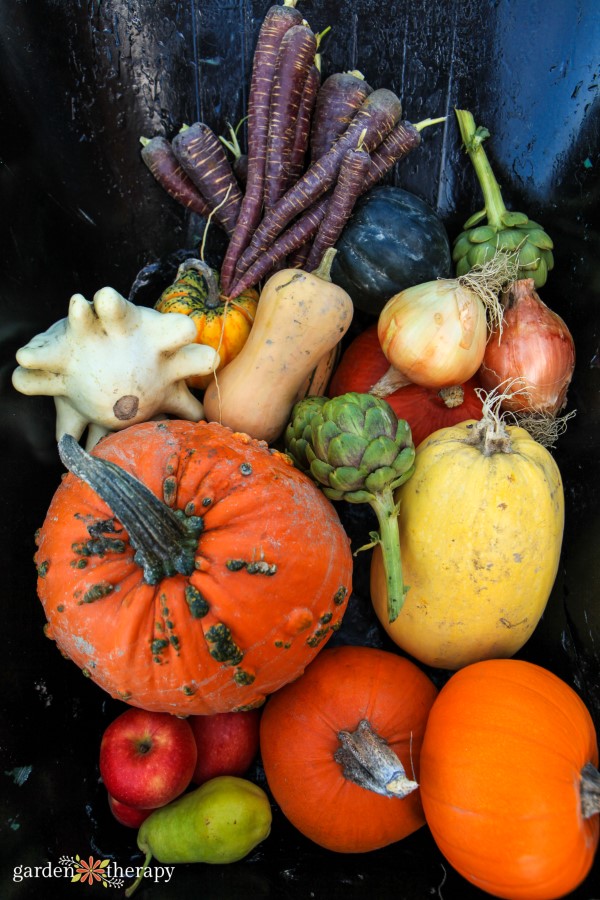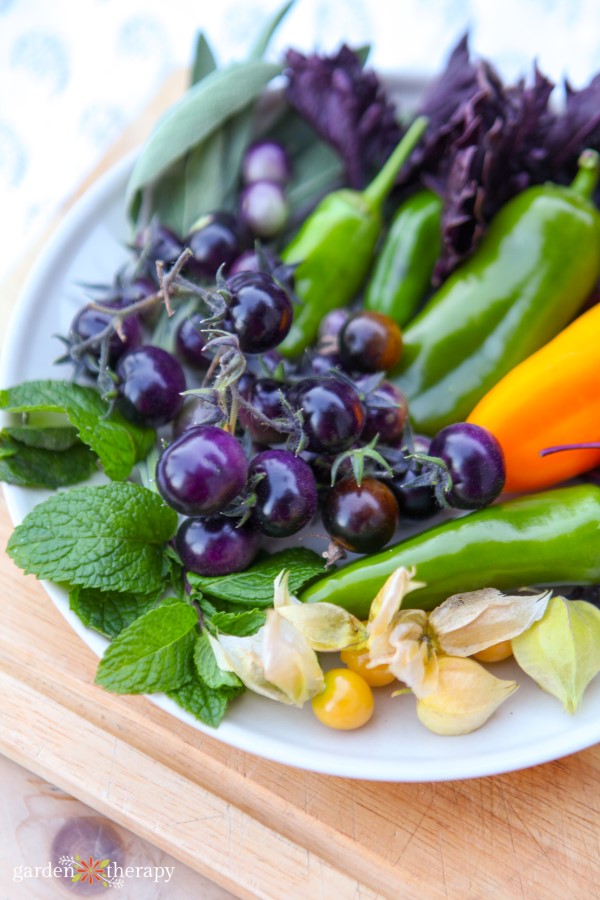Online, Thanksgiving is a big feast surrounded by friends and family decorated with turkeys, fun gourds, and fallen leaves. But there’s a lot of history and pain behind the holiday, and I invite you to rethink how you celebrate, focusing on gratitude and the harvest. Here’s how to practice Thanksgiving mindfulness this season.

In school, we’re taught that Thanksgiving began centuries ago as a peaceful union between pilgrims and the Indigenous people of North America. For the US, the Pilgrims in Plymouth shared a harvest with the Wampanoag people in 1621. For Canada, Samual De Champlain organized a feast and invited the local Mi’kmaq people in 1606.
Both are very simplified stories and far from the truth of what Thanksgiving really is and what it represents to many Indigenous people.
By now, many of us know that Thanksgiving is often linked to the harmful legacy of colonization. I personally don’t celebrate Thanksgiving due to the cultural implications it has for Indigenous Peoples.
What I do practice is thankfulness for family, friends, and abundance on a regular basis. Instead of celebrating the holiday and its history, we can use this time to be grateful and connect with ourselves and our overall well-being.
This post will cover Thanksgiving mindfulness and…


The True History Behind Thanksgiving
In North America, we have a painful past in the way in which our Indigenous Peoples have been treated. While Thanksgiving celebrates the pilgrims and the Indigenous people co-existing peacefully, the arrival of the pilgrims was the beginning of centuries of colonization and erasure.
The pilgrims brought disease, which quickly spread throughout many Indigenous tribes, killing a vast population of people. Colonizers displaced the Indigenous Peoples, taking their lands and forcing their European cultural values on the people.
I recommend you read more about the true history of Thanksgiving here.
When we celebrate Thanksgiving, it can be a reminder of this history, and it feels like we’re celebrating this history of erasure. The holiday can gloss right over the continued struggles of Indigenous communities, including their land rights and cultural survival. For this reason, I do not celebrate Thanksgiving traditionally.
The first thing we need to do is acknowledge this history and ensure we’re not complicit in ignoring the past.


Reconciliation and Education
What can we do about this? While we can’t change our past, we can work on creating a better, more respectful future.
It’s important for everyone to educate themselves about the topic. Learn from Indigenous storytellers, journalists, authors, filmmakers, influencers, and people. Hear their experiences and look beyond the textbooks in school.
Reconciliation is also important. In reconciliation, we work to create a mutually respected relationship between Indigenous and non-indigenous people. This can be done by acknowledging Indigenous rights and titles, examining stereotypes, learning about Indigenous history, supporting their culture and beliefs, and trying to build better relationships going forward.
Celebrating the Harvest Instead
For centuries and generations, people from all over the world have celebrated the harvest. Native Americans in the Southeastern US have Green Corn Ceremonies to celebrate the corn ripening and harvest. In Nigeria, the Igbo, Yoruba, and Idoma people celebrate the New Yam Festival as the beginning of the yam harvest season. In China, the Mid-Autumn festival celebrates the moon at its fullest and brightest as gratitude for a good harvest.
Many gardeners know fall as a time of harvest and abundance. I celebrate this season by hosting feasts with my loved ones and cooking meals from the produce I’ve grown.
It’s not about one big Thanksgiving meal but a series of gatherings that honour the earth’s bounty.


Choosing Your Family and Connecting
Holidays that focus on gathering a family together can be difficult for many people who have lost loved ones or have difficult relationships with the idea of family.
You can redefine family completely. Family can be who you choose, not just those you’re related to. Invite your neighbours, your best friend, your partner’s friends, your children’s friends…anyone who you want to surround yourself with.
In my life, my gatherings have long been a celebration of my chosen family, those who nourish me as much as I nourish them.


Setting Your Personal Boundaries
Celebrating with your chosen family is an important boundary to set, but it’s not the only one. No matter who you celebrate with, remember that you should never need to force yourself into a harmful ritual or toxic family dynamics.
If you’re anxious at the thought of spending yet another stress-induced holiday with family, ask yourself what it would be like if you didn’t go. Or if you did, how could you make it better?
Boundaries, especially during these gatherings, are a form of self-care and a reflection of the beauty in cultivating relationships that feel right.


Gratitude from the Garden
The garden has taught me so much about gratitude. From starting your own seedlings to watching your garden grow into an urban oasis, gardening has taught me the value of patience and nurturing.
In return, I gain a deeper sense of gratitude when I harvest. Only gardeners know that nothing tastes better than a butternut squash or a tomato you’ve cared for all season.
When I share the food I’ve grown with loved ones, it allows me to appreciate the journey the food has made from seed to table—and that’s a form of celebration that’s meaningful beyond any traditional holiday.



